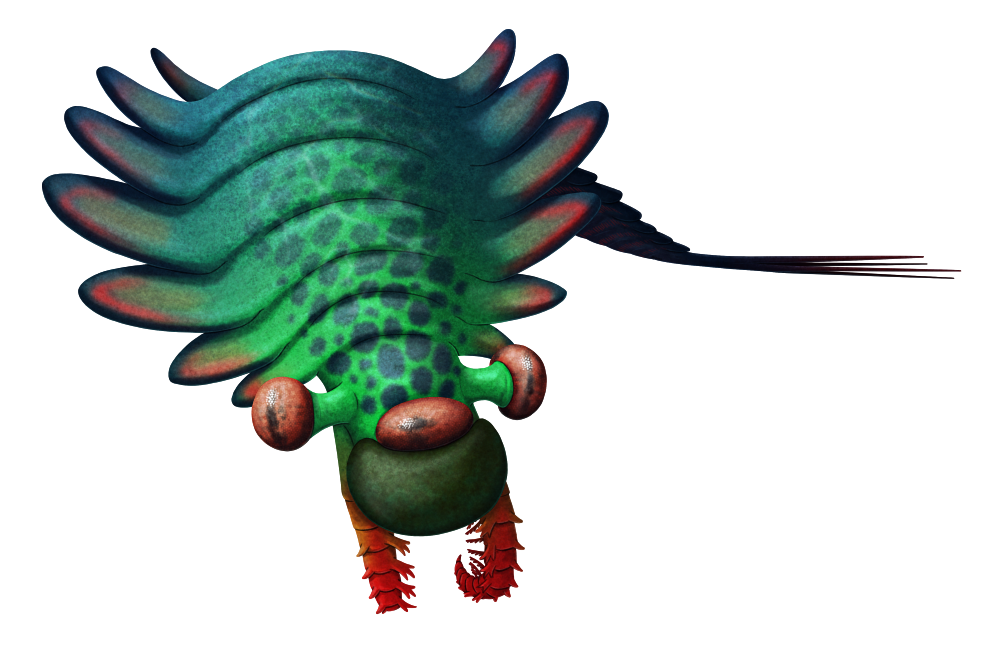Radiodonts were early arthropods with specialized frontal appendages, disc-like mouths, complex compound eyes, and swimming flaps along the sides of their bodies. Once considered to be bizarre “weird wonders” of the Cambrian Explosion that represented a failed evolutionary experiment, we now know that they were actually a highly diverse and successful lineage that lasted for at least 120 million years.
While some radiodonts were the largest animals of their time periods, Stanleycaris hirpex here was one of the smallest known members of the group – although at around 10cm long (~4″) it was still respectably big compared to most other Cambrian animals.
Discovered in the Canadian Burgess Shale deposits (~508 million years ago), it was originally known only from isolated frontal appendages and mouthparts, and had been assumed to be a fairly typical member of the hurdiid family. But the recent discovery of over 200 new fossils, including some exceptionally well-preserved full body specimens, has catapulted it directly from being poorly-known into now being one of the most completely known of all radiodonts.
And it had a very big surprise for us, right in the middle of its face.
It turns out that Stanleycaris had a huge third eye, unlike anything ever seen in a radiodont before. A large unpaired eye was also part of the five-eyed arrangement in opabiniids and Kylinxia, and finding a similar example in radiodonts too raises the possibility that this sort of well-developed “median eye” may have been more widespread in early arthropods than previously thought.
Along with the third eye, some of the Stanleycaris specimens preserve fine internal details of its nervous system and show that its brain was made up of two segments instead of the three seen in modern arthropods. It also had gills positioned on its underside, unlike most other radiodonts which had them on their backs.

